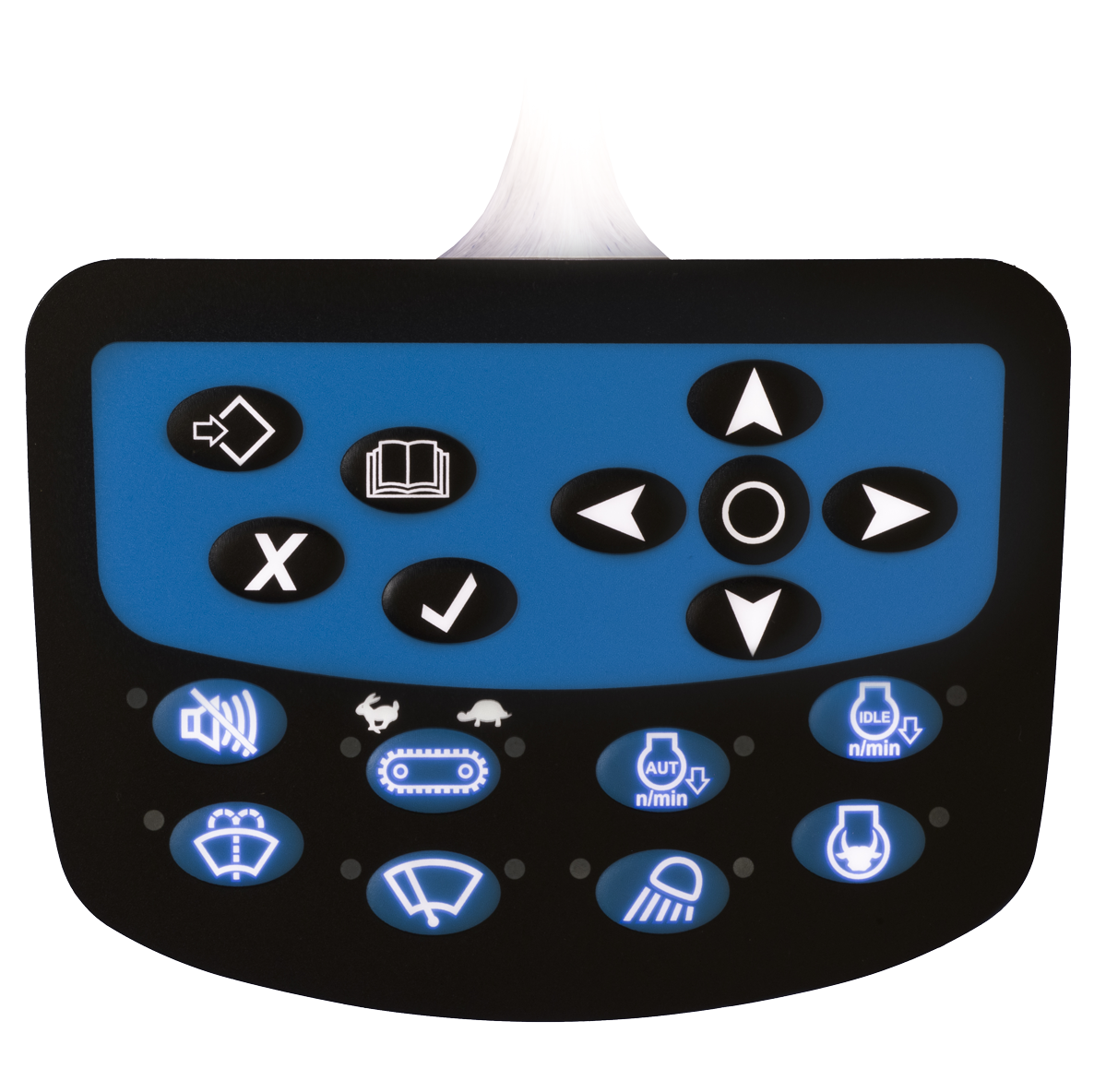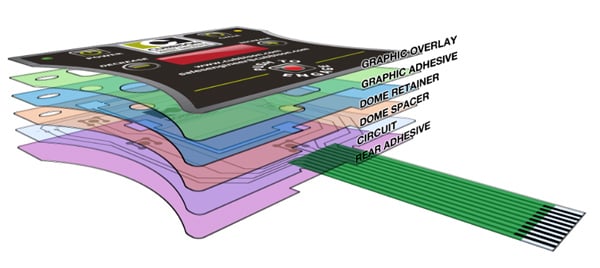Why Membrane Switches Are Critical for Efficient Control in Healthcare Devices
Why Membrane Switches Are Critical for Efficient Control in Healthcare Devices
Blog Article
Membrane Layer Switch Innovation: The Secret to Reputable and Cost-efficient Interfaces
Membrane layer switch technology has become a pivotal part in the layout of interface, providing both reliability and cost-effectiveness throughout a varied variety of applications. Its robust construction ensures resistance to environmental challenges, while the flexibility in layout permits for tailored services that satisfy certain industry demands. As we discover the diverse advantages of membrane layer buttons, their capacity for development increases inquiries about future applications and developing patterns. What does the following chapter hold for this modern technology in a significantly electronic landscape?
Recognizing Membrane Change Technology
Membrane layer switch innovation is an extensively used user interface service in different digital tools, supplying a smooth blend of capability and layout. This technology includes multiple layers of materials, normally being composed of a graphic overlay, spacer layer, and a circuit layer. The graphic overlay presents the interface elements, while the spacer layer divides the circuit layer from the overlay till a customer triggers a button.
When stress is applied to the overlay, the circuit layer completes the electric circuit, sending out a signal to the device. This mechanism permits for various setups, consisting of responsive responses and backlighting alternatives, enhancing individual communication. Membrane layer buttons are normally made making use of durable products such as polyester or polycarbonate, ensuring longevity and resistance to environmental elements like wetness and dust.
The convenience of membrane layer switches over enables their application in varied markets, consisting of clinical devices, consumer electronics, and industrial controls. Their portable layout allows for integration into space-constrained environments, supplying a reliable customer interface without endangering visual allure. Recognizing the details of membrane layer button modern technology is essential for manufacturers and designers looking for to develop dependable and efficient human-machine interfaces.
Key Benefits of Membrane Layer Buttons
While different interface services exist, membrane switches deal unique advantages that make them a recommended choice in numerous applications. Among the main benefits is their resilience; membrane buttons are developed to endure severe ecological problems, including dampness, dirt, and temperature level variations, making sure resilient performance. This strength considerably reduces the demand for regular substitutes, thus lowering overall upkeep expenses.

Furthermore, membrane layer switches are lightweight and portable, making them appropriate for applications where area is limited. Their inconspicuous layout adds to a smooth look without jeopardizing performance.
Cost-effectiveness is also a significant benefit, as the manufacturing process for membrane switches tends to be less costly compared to standard mechanical buttons. This cost, incorporated with their integrity and convenience of installment, settings membrane layer changes as a sensible remedy website link for a vast array of industries looking for effective and reliable customer interfaces.
Applications Throughout Different Industries
Just how do membrane buttons adapt to the diverse requirements of various sectors? Membrane button innovation is increasingly identified for its flexibility, making it ideal for a large range of applications throughout multiple fields.
In consumer electronic devices, membrane buttons offer a portable service for remote controls and home appliances, boosting user experience through user-friendly layout. Additionally, the commercial sector leverages membrane layer buttons for machinery control panels, profiting from their resistance to severe settings, such as moisture and dust.
Army and aerospace applications also use membrane layer switches for their reliability and ability to endure severe problems, making sure functional efficiency in crucial circumstances. Furthermore, the food and beverage market takes on these switches for automated systems, where cleanliness and simplicity of procedure are paramount. Ultimately, membrane switches are tailored to meet the special needs of each market, confirming their essential role in modern innovation user interfaces
Style and Customization Options

In the realm of membrane switch innovation, design and customization choices play a pivotal role in boosting functionality and user communication. These buttons can be customized to satisfy particular operational needs and visual choices, making them flexible components in various applications.
Among the main personalization choices is the design of the switch itself, which can be made to suit special interface and ergonomic considerations. By changing the shape, size, and setup of switches, makers can create instinctive layouts that facilitate convenience of usage. Additionally, the unification of different colors and visuals overlays enables branding and improved presence, making sure that users can promptly determine functions.
In addition, membrane buttons can be engineered with numerous tactile responses systems, such as raised switches important link or distinct clicks, to enhance the customer experience. Different products can also be picked for durability and ecological resistance, dealing with factors such as wetness, temperature fluctuations, and chemical exposure.
Eventually, the comprehensive style and customization alternatives readily available in membrane layer switch technology encourage businesses to produce customized solutions that not only fulfill functional needs however additionally align with their branding and operational requirements.

Future Patterns in Membrane Layer Buttons
As membrane switch innovation proceeds to advance, future trends are significantly focused on improving customer experience and incorporating advanced functionalities. One considerable trend is the assimilation of touch-sensitive and capacitive innovations right into see this standard membrane layer buttons. This growth permits more intuitive user interfaces, offering tactile comments while preserving a smooth style.
One more emerging trend is using eco-friendly materials, driven by the growing demand for lasting production methods. Manufacturers are seeking to decrease their carbon impact by using recyclable substrates and low-impact inks, aligning with global sustainability goals.
Furthermore, the surge of the Web of Things (IoT) is triggering the consolidation of smart features right into membrane layer switches. Enhanced connection alternatives will certainly allow devices to interact with each various other, enabling seamless integration right into wider systems.
Additionally, developments in printing innovations, such as digital printing, are permitting greater layout versatility and customization. This makes it possible for suppliers to create intricate styles and vivid colors cost-effectively.

Conclusion
In final thought, membrane button modern technology represents an essential innovation in user interface design, using substantial benefits in longevity, customization, and cost-effectiveness. As improvements proceed to arise, specifically in touch-sensitive interfaces and sustainable materials, the capacity for membrane changes to boost customer experience and capability remains promising.
Report this page